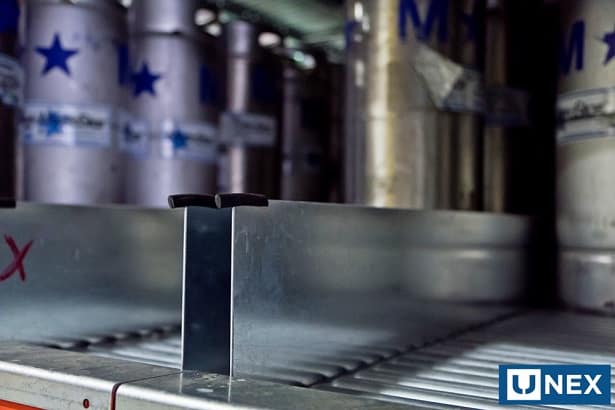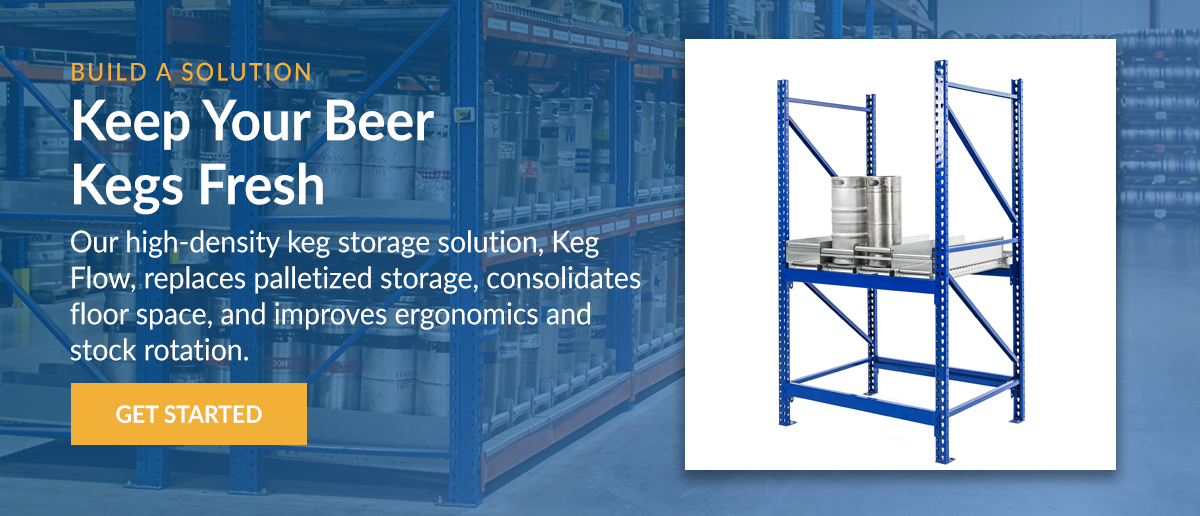Ask A Space Optimization Expert: Keg-Flow Edition
Dear Space Optimization Experts
I'm interested in Keg-Flow, but do I really need the guard rails as well? - Jeff L.
To guard rail, or not to guard rail? Not to quote The Bard, but when our customers ask us about flowing round objects such as kegs, that truly is the question. In general, we don’t suggest using guard rails when flowing objects because they cause unnecessary friction during the flowing process, and can slow down or stop your objects from flowing altogether. However, the exception to this “rule” is when flowing round objects. The most common time we encounter this exception is with our beer wholesaler customers, who use flow racks to store their kegs. However, just because a customer is storing a keg does not automatically make them a good candidate to use guard rails in their storage. There are three questions our experts must ask before we make a suggestion to install guard rails.
1. FIFO or static?
Are you pitching your storage or leaving it flat? If you are using a FIFO system, a guard rail is something you might consider using. When storing round objects on a pitched surface, the objects tend to all run forward at the same time and because they are round they don’t always stay right in a perfect line. Often, gravity will force them to run to the left or right of the object in front of it, as there are no surfaces to lie flat against. Think of a guard rail like the bumpers in bumper bowling. They keep you from going off the lane. That’s the goal.
2. Do you require visual indicators?
How concerned are you with having a visual indicator at each individual pick location, beyond a simple label or bar code? Some customers have other technology like pick-to-light or pick-to-voice, but a guard rail can serve the same purpose. It’s creating a visual of what is in that pick location. The advantage of this is it cuts down the potential for pick errors. From an order accuracy standpoint, it has been proven that having a visual cuts down on picking errors and a guard rail is another way to add a visual component to the pick.
3. What is the size of what you’re storing?
Is it a quarter keg or a 1/6 barrel keg? The quarter keg is short and stocky and is nearly impossible to flip over even when pitched forward. A 1/6 keg, on the other hand, is tall and narrow, which is an awkward shape for storage because it can very easily tip forward. A guard rail is a very easy way to take care of this issue. Our guard rails come in varied sizes between 1 inch and 6 inches to ensure that you can store whatever size or shape you need. With a quarter keg, for example, a 1-inch guard rail would do the trick because it really only needs to catch the bottom rim of the keg to keep it in line. This eliminates steel. With a taller keg, a taller guard rail would be more appropriate.
Answering these three questions will help Jeff determine if a guard rail is right for his Keg-Flow application. If you have questions about our Keg-Flow solutions (or any solution from the minds of our Space Optimization Experts, for that matter), you can submit them here or call us at 1800-695-SPAN(7726).



